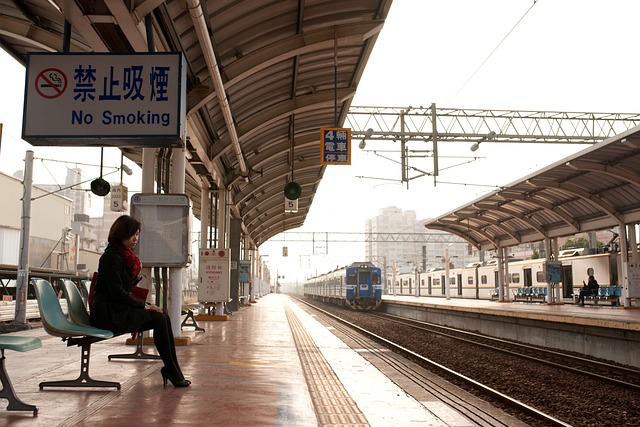Train travel in the United Kingdom has long been a cornerstone of the nation’s transport infrastructure, with millions of passengers relying on the rail network for daily commutes, business trips, and leisure travel. As railways continue to play a vital role in the UK’s transportation system, one of the foremost concerns for both passengers and authorities is safety. Fortunately, statistics over the past 10 years reveal a consistent and reassuring trend: train journeys in the UK are among the safest in Europe.
A Snapshot of Passenger Safety
The most telling figure in assessing rail safety is the number of passenger fatalities. Over the past decade, from 2013 to 2023, the UK rail network has maintained an extremely low fatality rate. In fact, passenger deaths directly related to train accidents have been so rare that some years have seen zero fatalities. Isolated incidents do occur, but they are few and far between, making train travel a much safer mode of transportation when compared to road travel.
When we look at the overall risk of injury, non-fatal incidents have also been kept to a minimum. Most of the injuries reported were not the result of accidents involving the trains themselves but were instead due to slips, trips, or falls at stations. While these incidents do represent a concern for safety, they are typically minor and are part of the broader set of challenges that come with managing busy public spaces.
The Decreasing Frequency of Train Accidents
Train accidents, such as derailments or collisions, have become increasingly rare over the past decade, thanks in part to substantial investments in safety technology and infrastructure improvements. One of the most significant accidents in recent years was the Croydon tram derailment in 2016, which led to tragic loss of life. However, this event stands as an outlier rather than the norm, highlighting the overall safety record of the network.
Several factors have contributed to the reduction in accidents:
- Advances in Safety Systems: The use of automatic train protection (ATP) systems, which automatically apply brakes if a train is in danger of passing a signal at danger, has significantly reduced the risk of collision and overspeeding.
- Infrastructure Maintenance: Rigorous inspection schedules and maintenance programs have helped keep the network in good condition, reducing the chances of derailments or mechanical failures.
- Modern Signalling Technology: Improvements in signalling systems have allowed for better management of train movements, further decreasing the risk of accidents on the tracks.
These advancements mean that the chances of a passenger being involved in a serious accident have diminished steadily, making the UK rail network one of the safest in the world.
Persistent Risks: Level Crossings and Trespassing
While train passengers are statistically very safe, there remain risks on the UK railways, particularly at level crossings and from trespassing. Incidents at level crossings, while less common today than in previous decades, continue to pose a risk, primarily to motorists or pedestrians rather than train passengers. The challenge of balancing the needs of road and rail users in rural and urban areas means that level crossings will always present a safety concern.
Trespassing on railway property is another significant issue. Sadly, many of these incidents result in fatalities, often due to suicides. The UK rail industry has made concerted efforts to reduce the number of such incidents by working with mental health organizations, installing barriers at known hotspots, and running public awareness campaigns to discourage risky behavior near the tracks. These measures have had some success, though the issue remains a persistent challenge.
The Impact of COVID-19 on Rail Safety
The COVID-19 pandemic had an unexpected impact on rail safety statistics. With a dramatic reduction in passenger numbers due to lockdowns and restrictions on travel, the number of incidents on the railways also fell. Fewer people using trains naturally led to fewer accidents and injuries. However, as passenger numbers returned to pre-pandemic levels in 2022 and 2023, rail safety statistics began to reflect the patterns seen before the pandemic.
Despite the challenges posed by fluctuating demand during and after the pandemic, the rail network has continued to prioritize safety, ensuring that as passengers return to trains, they are traveling in one of the safest environments possible.

Moving Forward: The Future of Rail Safety in the UK
As the UK rail industry looks to the future, safety remains at the heart of its plans for development. Innovations in rail technology, such as digital signalling and automated systems, are expected to further enhance safety standards. In addition, the industry’s commitment to regular maintenance and upgrades of infrastructure will ensure that the network continues to meet high safety benchmarks.
Efforts to mitigate risks at level crossings, combat trespassing, and reduce suicides are ongoing, with new technologies such as trackside detection systems and drone monitoring being explored to improve safety further.
Conclusion
Train travel in the UK has maintained an exemplary safety record over the past decade, with low rates of accidents and fatalities. Through a combination of technological innovation, rigorous safety protocols, and public awareness campaigns, the UK rail network has become one of the safest in the world. While challenges such as trespassing and level crossing incidents remain, the overall trend in rail safety is overwhelmingly positive. Passengers can continue to rely on the UK’s railways as a safe, efficient, and environmentally friendly mode of transport.
For anyone considering their next journey, the message is clear: train travel in the UK is not only convenient and reliable but also exceptionally safe.
